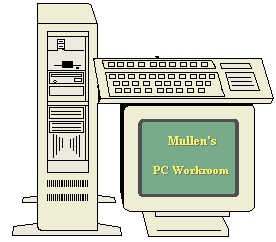

I'm not a professional programmer (although I have written a fair amount of code in the past), graphics artist or web site designer (as if you couldn't tell). This site was an exercise in learning more about Web site development, HTML coding, organized thinking and, in general, an interesting way to kill a fair amount of time.
This site was only possible because a lot of generous people made their experience and wisdom available for me to draw on and learn how to do this. So, I'm passing it on for whatever it's worth.
I'll explain a bit about how I made this site and perhaps someone else will benefit from the hours of strong coffee (and strong language!) employed to make it happen. I'll be glad to try to answer any questions you might have via email only. Be patient and remember that old adage, "Advice is usually worth what you pay for it!"
If you go back to The Foyer (really, FOYER.HTM#mastercontents), and then to Ed's Resume, you will find links to:
All three of these began life as the Word file.
view a map of the site in graphical form (SITEMAP.HTM
and SITEMAP2.HTM)
view a page about the files used in the site (FILES.HTM)
a Word 6.0 document (FILES.DOC) about the files used in the site.
And, of course, if you're looking at these pages all you need to do is use your browser to save the pages on your hard disk as HTML files in ASCII format. Then you can open them to peruse at your leisure in a text editor of your choice. Usually, the way to do that is (in you browser as you are viewing a page):
I try to hold true to my own personal philosophy of Web page design - KISS (Keep It Simple Stupid!). Until we have affordable very high-speed data links to the Internet, I can't embrace the overuse of large graphics, sound and animation files. It makes surfing the net seem more like swimming through molasses.
You would use an image map if you want a single graphic to have multiple "hot spots" each of which is a link to a different place. It makes a more visually appealing page than just using text links. For example, here are two different ways of linking to exactly the same pages. First, three plain text links:
Then, here are the same links as active parts of a single graphic file:
As you pass your mouse cursor over this graphic it will change shape to indicate the hot spots/links. These areas are defined in the HTML code for this page in a map definition as follows:
<MAP NAME="MAP1">
<AREA SHAPE="RECT" COORDS="0,0,80,34" HREF="DINING.HTM">
<AREA SHAPE="RECT" COORDS="85,0,154,34" HREF="ATTIC.HTM">
<AREA SHAPE="RECT" COORDS="166,0,248,34" HREF="MAPTEST.HTM">
</MAP>
Then, the graphic is displayed using the "IMG USEMAP" code:
<CENTER>
<IMG USEMAP="#MAP1" SRC="SAMPL-06.JPG" BORDER=0
HEIGHT=45 WIDTH=250>
</CENTER>
TIP - If you want to use a single graphic image to point to a single reference, where the entire graphic is a single hot spot, place the graphic on the page and make it a link reference the same way you would make a line of text a link. You don't have to use an image map for this.This is the technique used with the TO THE FOYER graphic on most of the pages in this site.
I did not use any unusual tools to create the image maps used in the site. It was done by writing HTML code in Word. Not the easiest method, but it works, and you don't need any other software other than a graphics creation program that will save GIF or JPG (JPEG) files, and allow you to determine the total size of your graphic and the coordinates of each mapped area in the graphic. If you're interested in this technique, you might want to save the page on your disk to examine the code in a text editor.
Here's a page about some of the resources I used to learn how to make this web site.